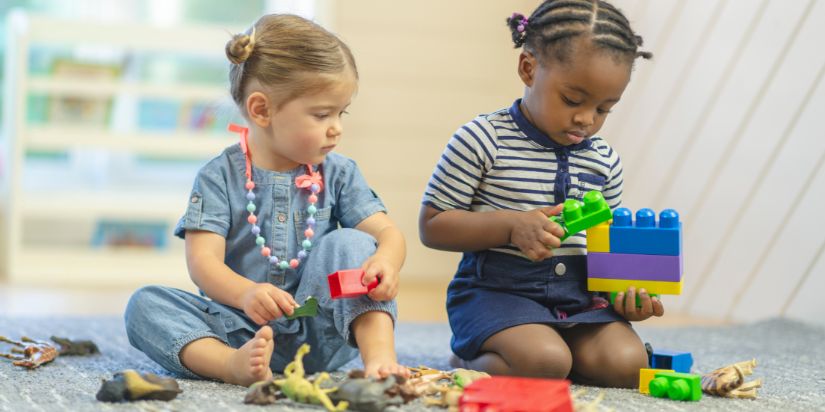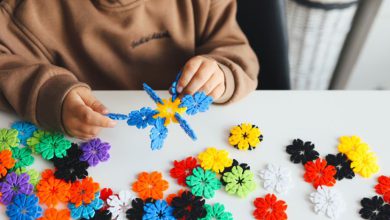Parallel Play in Young Children

Parallel Play in Young Children
Ever pondered over the query – what is parallel play in children? Simply put, it’s a form of play that is often observed in children, particularly between the ages of 2 and 3. This type of play sees children engaging in similar activities in close proximity to each other, yet without any direct interaction. As kids start to socialize and explore their surroundings, parallel play forms an integral part of their journey.
Although it might seem like individualistic play, it’s a rich source of developmental benefits. This post will delve into what parallel play in children is, its many advantages, how it sets itself apart from other types of play, and how you can encourage it at home. Our aim is to equip you with the tools to foster your child’s social and cognitive growth through parallel play.
The Definition of Parallel Play
Have you ever asked yourself – what is parallel play in children? Well, it’s a behavior typically seen in kids between the ages of two and three. This type of play involves children partaking in independent activities while in close proximity to each other, but not actively interacting.
In the midst of parallel play, each child is absorbed in their own activity, occasionally observing or imitating the actions of their playmates. Although characterized by individualistic play, it plays a crucial role in a child’s social development. It paves the way for children to explore their interests while learning from their peers, even without direct engagement.
The age range for parallel play can span from 18 months to three years old. Every child is unique and develops at their own pace, so the timing can vary. As children mature and their social skills advance, they transition into more interactive forms of play.
The Benefits of Parallel Play
While parallel play may seem like children are simply engrossed in their own worlds, it actually offers a multitude of developmental benefits. One of the key perks of parallel play is its positive impact on social and emotional growth. Through parallel play, children learn essential social skills such as sharing, taking turns, and respecting personal boundaries. They get the opportunity to observe and imitate their peers’ behavior, fostering a sense of empathy and cooperation.
Parallel play also plays a crucial role in promoting language and communication skills. The spontaneous conversations children have during play, even without direct interaction, enhance their vocabulary and conversational abilities. They also develop listening skills as they pay attention to their peers’ words and actions.
Lastly, it aids in cognitive development. The exposure to new toys, objects, or scenarios stimulates their curiosity and encourages problem-solving abilities. Observing how their peers interact with toys or approach different situations can ignite their creativity and imaginative thinking.
Nudging Your Child Toward Parallel Play
As a parent, you can encourage parallel play by setting up a safe, comfortable, and distraction-free play environment. Make sure there’s ample space for multiple children to play side by side without feeling crowded. Arrange toys and materials in an accessible manner for children to explore with ease.
Opt for toys and activities that promote independent play and imagination. Open-ended toys like blocks, puzzles, and art supplies allow children to engage in parallel play while exploring their creativity. Steer clear of toys that encourage solitary play or require constant adult involvement.
Model positive social interactions to encourage parallel play. Show how to take turns, share, and communicate respectfully. Encourage children to observe and imitate these behaviors during playtime. When conflicts arise, offer gentle guidance to teach problem-solving skills and conflict resolution.
At Little Sunshine, we understand the importance of parallel play in children’s development. That’s why we offer a wide array of age-appropriate toys and activities that promote independent play and social interaction. Visit our website to explore our collection and create the perfect play environment for your little ones.
Contrasting Parallel Play with Other Types of Play
Children’s play comes in various forms, each with unique characteristics and benefits. Parallel play and cooperative play are two common types of play, each offering unique advantages.
Parallel play sees children playing side by side but independently, typically observed in toddlers who are still developing social skills. Cooperative play, on the other hand, involves children actively engaging with one another, sharing toys, and working towards a common goal. This type of play enhances teamwork, communication, and problem-solving skills, and is common in older children with more developed social skills.
Associative play, closely related to parallel play, involves independent play but with a greater level of social interaction. While children aren’t fully cooperating or coordinating their play, there’s a higher level of communication.
Both parallel and cooperative play have their benefits. Parallel play fosters individual skills and helps children become comfortable sharing space and materials. Cooperative play enhances social skills, empathy, collaboration, and teamwork. At Little Sunshine, our products aim to encourage both independent and cooperative play, providing a platform for children to explore their interests while fostering social interaction and collaboration.
Encouraging Parallel Play in Your Home
As a parent, there are several ways to support parallel play at home. Organize playdates with other children of a similar age to create opportunities for parallel play. Ensure the play area is safe and has a variety of engaging toys and activities. Supervise the playdate while allowing the children to explore and interact at their own pace.
Parallel play offers a great opportunity to introduce concepts of turn-taking and sharing. Encourage your child to take turns with toys or activities and praise them when they do so. This helps them understand the importance of waiting for their turn and respecting others’ possessions.
Use parallel play to teach empathy and understanding. Encourage your child to observe and recognize other children’s emotions during play. Discuss how different actions or behaviors may make others feel and guide your child towards kind and considerate play.
By implementing these strategies, you can create a supportive environment for parallel play at home. Remember, parallel play is a normal part of child development, and providing opportunities for it can greatly enhance their social skills and overall growth.
To read more about play, check out the following articles:
- The Importance of Play in Early Education: A Key to Childhood Development
- Play-Based Learning
- The Six Stages of Play





